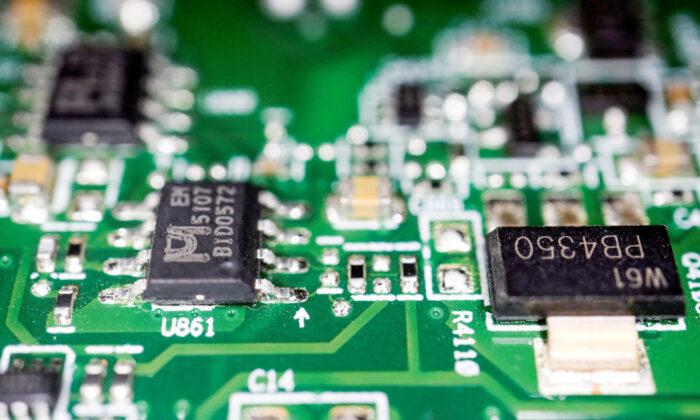WASHINGTON—The U.S. Commerce Department said on Wednesday that more than 460 companies have expressed interested in winning government semiconductor subsidy funding in a bid to boost the country’s competitiveness with China’s science and technology efforts.
The White House is marking the one-year anniversary on Wednesday of President Joe Biden’s signing of the landmark “Chips for America” legislation providing $52.7 billion in subsidies for U.S. semiconductor production, research, and workforce development.
President Biden said in a statement that companies have announced $166 billion in semiconductors and electronics manufacturing over the last year, adding the law will “make America once again a leader in semiconductor manufacturing and less dependent on other countries for our electronics or clean energy supply chains.”
The Commerce Department began accepting applications in June for the $39-billion subsidy program for U.S. semiconductor manufacturing as well as equipment and materials for making chips but has not yet issued awards.
“We’re finally making the investments that are long overdue to secure our economic and national security,” Commerce Secretary Gina Raimondo told reporters. “We need to move quickly but it’s more important we get it right.”
A senior Commerce Department official told reporters the department is moving quickly: “We are in active dialogue with applicants and we expect to be announcing major progress in the months ahead.”
The chips law also includes a 25 percent investment tax credit for building chip plants, estimated to be worth $24 billion.
Intel CEO Pat Gelsinger said Tuesday “governments around the world are working at a historic pace to revitalize semiconductor manufacturing and ensure a robust, resilient supply chain. In the U.S., progress is undeniable.”
The Commerce Department spent the last year building a team of more than 140 people and writing rules for accepting and assessing applications.
The department is also seeking to ensure China will not benefit from U.S. funding and is requiring companies seeking major awards provide access to affordable high-quality childcare and share any excess profits.
The department previously said direct funding awards are expected to range between 5 percent–15 percent of project capital expenditures and total award amounts generally not exceed 35 percent of project capital expenditures.
“We’re going to be doing our own diligence. We’re not writing blank checks to any company that asks,” Ms. Raimondo said in February.
Once the Commerce Department decides on worthy projects, officials must decide how much to award in government funds—and how to structure awards with a mix of grants, government loans, or loan guarantees.
The law also dedicates $11 billion for advanced semiconductor manufacturing research and development. The focal point will be the National Semiconductor Technology Center.
Commerce said that discussions are underway between the departments of Commerce, Defense, Energy, and National Science Foundation to establish the center “to better integrate research and development and workforce efforts across the semiconductor ecosystem.” No location has been identified.





